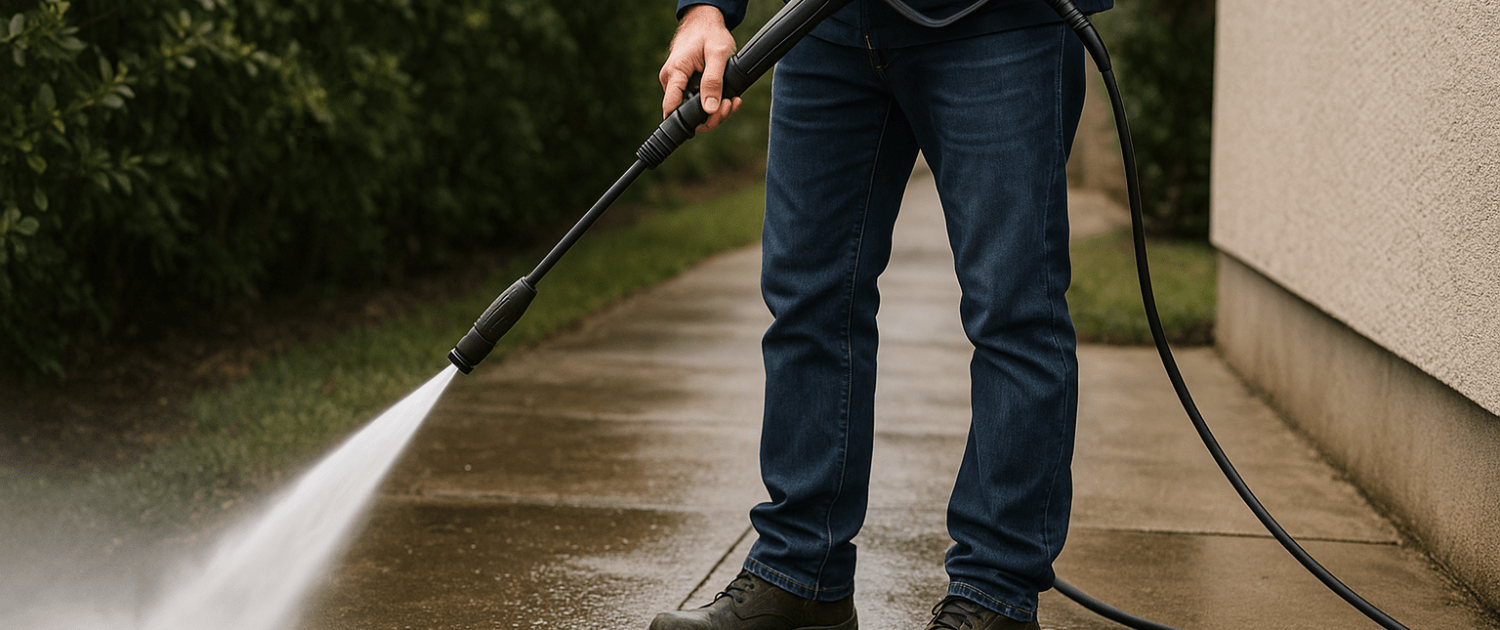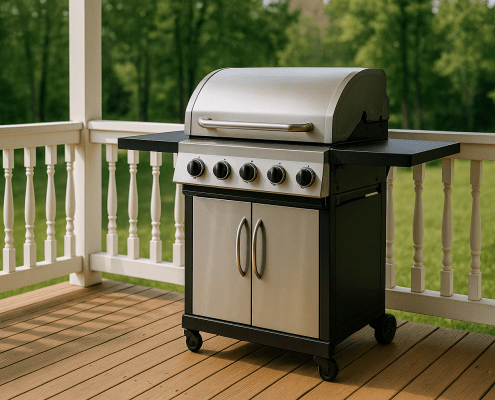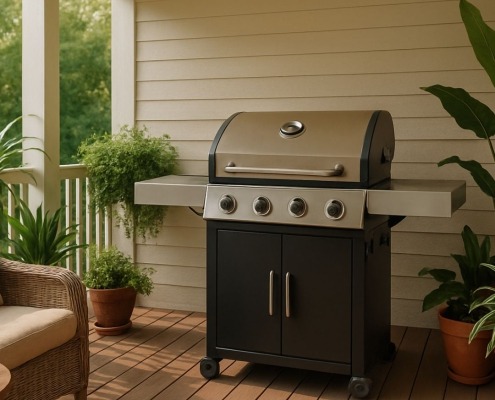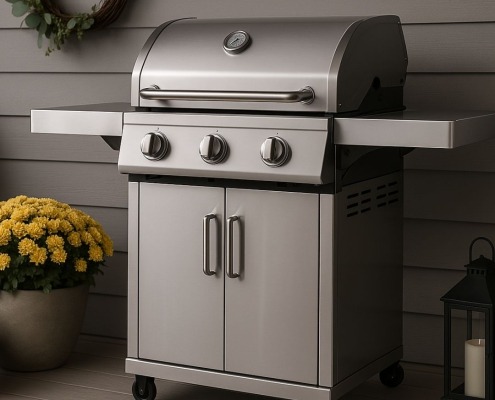Pressure Washer Soap and Detergent 101: What Works Where
Steven E / Wednesday May 7, 2025
The effectiveness of your pressure washer often depends on the soap or detergent you use in conjunction with it. By the end of this article, you’ll be equipped with the knowledge to make informed decisions about pressure washer soaps and detergents, ensuring that your outdoor surfaces sparkle and shine with minimal effort and maximum results.
If you need any replacement parts for your appliance, you can enter your model number at AppliancePartsPros.com to order them. Most orders arrive in just two business days, and we have thousands of free guides to show you how to install your new parts.
The information in this article may not apply to your specific appliance model. We recommend consulting your manufacturer’s documentation or contact us with any questions.
Types of soaps and detergents
Common ingredients
- Surfactants: Surfactants are active agents that lower the surface tension of water, allowing it to penetrate and lift dirt from surfaces more effectively.
- Solvents: Solvents are used to dissolve grease, oil, and other stubborn substances. They are often found in detergents designed for automotive cleaning.
- Alkaline cleaners: These cleaners are effective at removing heavy soil, grease, and grime. They are commonly used for cleaning concrete and industrial equipment.
- Acidic cleaners: Acidic cleaners are used to remove mineral deposits, rust, and stains caused by hard water. They are suitable for cleaning surfaces like brick and stone.
Environmentally friendly options
- Biodegradable soaps/detergents: These products break down naturally and are less harmful to aquatic ecosystems.
- Phosphate-free formulations: Phosphates can contribute to water pollution. Phosphate-free products are gentler on the environment.
- Plant-based ingredients: Some pressure washer soaps and detergents use plant-based ingredients instead of synthetic chemicals, making them a greener choice.
Choosing the right soap/detergent
Surfaces
Different surfaces require different cleaning solutions. For example, a gentle detergent may be suitable for washing a car, while a more heavy-duty cleaner is needed for concrete driveways or decks.
Contaminants.
Identify the specific contaminants on the surface you’re cleaning, such as dirt, oil, mildew, or rust. Choose a soap or detergent formulated to target those contaminants effectively.
Compatibility with equipment
Check the manufacturer’s guidelines for your pressure washer to see if they recommend specific brands or types of cleaning solutions. Using incompatible products may void your warranty or damage the equipment.
Concentration levels and dilution ratios
Carefully read the product label to determine the recommended dilution ratios. Some solutions are highly concentrated and require dilution with water before use.
Adjust for severity
Depending on the level of grime or stains, you may need to adjust the concentration. More stubborn stains may require a higher concentration of detergent.
Read more: 10 Things You Should Never Pressure Wash
How to use soaps and detergents
- Always begin by carefully reading the manufacturer’s instructions on the soap or detergent label. This information will provide specific guidelines for usage.
- Ensure your pressure washer is in good working condition, with the appropriate nozzle attached for your cleaning task. If your pressure washer has a detergent reservoir, ensure it’s clean and empty.
- Determine the recommended dilution ratio for your chosen soap or detergent. Typically, you’ll need to mix the cleaning solution with water. Use a clean bucket or container for mixing.
- Add the prescribed amount of soap or detergent to the container and then add the corresponding amount of water. Stir or agitate the mixture thoroughly to ensure proper blending.
- Apply the soap or detergent solution to the surface to be cleaned using one of the following methods:
- Some pressure washers have a detergent injection system that automatically mixes the soap or detergent with the water as it flows through the machine. In this case, follow the pressure washer’s instructions for activating the detergent injection.
- If your pressure washer doesn’t have a detergent reservoir or downstream injection system, you can pre-spray the cleaning solution onto the surface using a separate sprayer or an attachment designed for detergent application.
- Depending on the product and the level of dirt or grime, allow the soap or detergent to dwell on the surface for a few minutes to break down contaminants. Refer to the product label for recommended dwell times.
- After the dwell time, switch to a suitable nozzle for rinsing (usually a high-pressure nozzle). Begin pressure washing from a safe distance, working your way from top to bottom and keeping the nozzle at a consistent distance from the surface to avoid damage.
- Rinse the cleaned surface thoroughly with clean water to remove all traces of soap or detergent.
Safety tips for handling chemicals
By following these steps and safety precautions, you can effectively use pressure washer soaps and detergents to achieve outstanding cleaning results while ensuring your safety and the longevity of your pressure washer equipment.
- Ensure proper ventilation when using detergents with strong fumes, especially in enclosed areas.
- Wear gloves and safety glasses to protect your skin and eyes from potential irritation or chemical splashes.
- Store soap and detergent containers in a cool, dry place away from direct sunlight and heat sources.
- Dispose of any leftover cleaning solution and containers in accordance with local regulations.
Read more: Pressure Washer Safety Guide
Troubleshooting common issues
Problem: Soap residue remains on the surface after washing, leaving a filmy appearance.
Solution:
- Make sure you’ve followed the recommended dilution ratio for the soap or detergent.
- After applying the soap or detergent, rinse the surface thoroughly with clean water to remove all residue.
- If the residue persists, you may need to increase the pressure or use a narrower nozzle for more focused rinsing.
Problem: After pressure washing, you notice streaks, lines, or uneven cleaning.
Solution:
- Keep the pressure washer nozzle at a consistent distance from the surface to ensure even cleaning.
- Overlap each pass by about 30% to avoid streaks and ensure uniform cleaning.
- Experiment with different pressure settings and nozzle types to find the best combination for the specific surface you’re cleaning.
Problem: Pressure washer is not effectively removing dirt or stains.
Solution:
- Ensure you’re using an appropriate soap or detergent for the specific contaminants you’re dealing with.
- Adjust the pressure setting on your pressure washer to a higher level if possible.
- Adjust nozzle: Try a different nozzle to achieve a more concentrated and forceful spray pattern.
- Equipment Won’t Start: If your pressure washer won’t start, check that it has fuel (if gas-powered) or is properly connected to a power source (if electric). Inspect the spark plug (for gas-powered) or circuit breakers (for electric) for issues.
Additional information
Thanks for reading! If you need replacement parts for any of your appliances, check out AppliancePartsPros.com, where you can enter your model number to find exactly what you’re looking for. Most orders arrive in two business days, and we have thousands of free resources to show you how to install your new parts.
You can also reach our award-winning customer service team at 1-877-477-7278, chat with a pro on our website and watch thousands of free video tutorials on our YouTube channel.
With nearly a decade of experience in providing top-notch customer service regarding appliance parts and repair, Steven enjoys sharing practical advice, troubleshooting tips, and interesting information to help readers stay informed.





